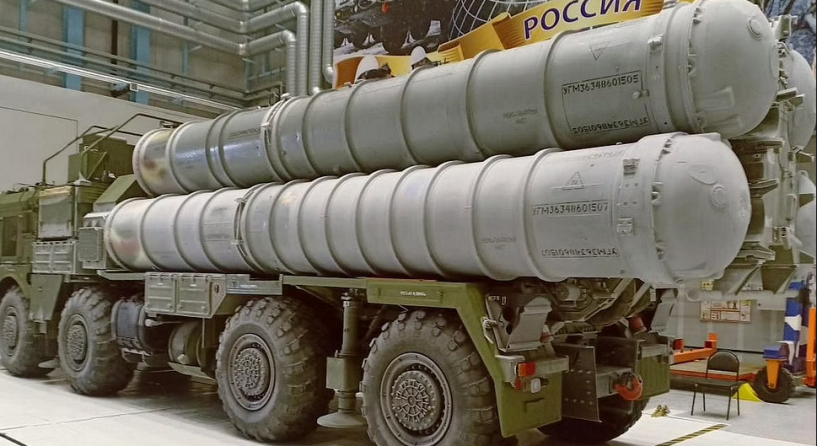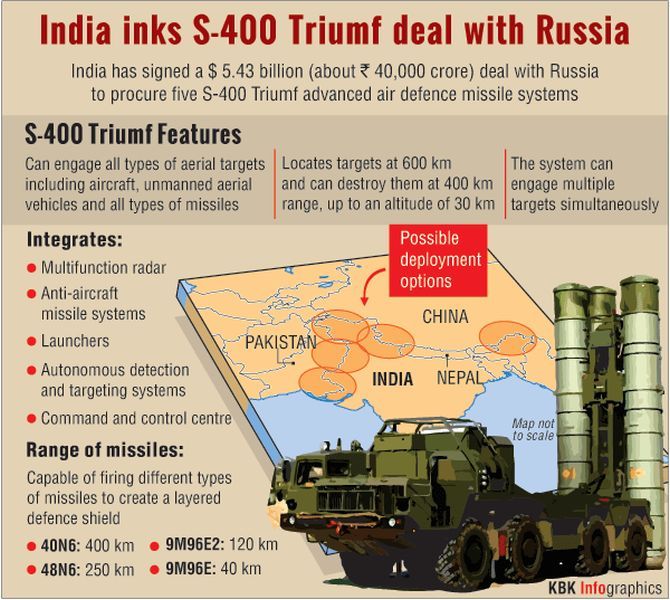Description

Disclaimer: Copyright infringement not intended.
Context: US House of Representatives have voted in favour of waiver for India. Member Ro Khanna had earlier said the US government must not impose sanctions on India under the Countering America’s Adversaries through Sanctions Act (CAATSA) for its purchase of S-400 missile weapons system from Russia.
Details:
- In the past, other American lawmakers have demanded India should not be sanctioned
- The Biden administration has not yet issued a clear statement on whether India might be subjected to sanctions under CAATSA, even as India began receiving the weapons from Russia in late 2021.
What is the CAATSA, and could it apply to India?
- CAATSA is a law that came into effect in the US in 2017, meant to punish countries having deep engagements with Russia, North Korea, and Iran using economic sanctions.
- The US flagged issues of Russia’s alleged interference in the 2016 Presidential elections, and its role in the Syrian war as some of the reasons for punishing engagement with it.
- It said countries having a “significant transaction” with Russian intelligence and military agents will be subject to at least five kinds of sanctions.
- Ordinary transactions will not invite sanctions, and the decision of who has sanctions imposed on them comes down to the interpretation of “significant transaction”.
- This is one of the various waivers or exemptions mentioned, such as the transaction not affecting US strategic interests, not endangering the alliances it is a part of, etc.
- Section 231 of the law notifies 39 Russian entities, transactions with whom could invite sanctions. Almaz-Antey Air and Space Defence Corporation JSC, who have made the S-400 system, are in this list.
- India has purchased the S-400 Triumf missile systems, which have advanced capabilities to judge the distance from a target and launch a surface-to-air missile attack.
- Five such systems were bought by India in 2018 for US$ 5.5 billion and in November last year, their delivery began. They were deployed in Punjab.
- In 2020, Turkey was sanctioned for its purchase of the S-400 system.
So why has India not faced CAATSA sanctions yet?
- The US has never categorically stated whether CAATSA would apply to India.
- India is a really important security partner of US now. And US values moving forward that partnership
- With the ongoing conflict in Ukraine and the US hardening its stance against Russia, India has continued its neutrality and not joined any of the sanctions against Russia imposed by Western countries.
- India has mentioned the need for the S-400 missiles for its border defence several times in the past.
What is S-400?
- The S-400 Triumf is a mobile, surface-to-air missile (SAM) system developed in the 1990s by Russia as an upgrade to the S-300 family. The evolved version of the S-400 system is the S-500 Prometheus, which entered service in 2021.
- S-400 (NATO name SA-21 Growler) is considered one of the world’s most advanced air defence systems that can simultaneously track and neutralise a range of incoming objects spanning aircraft, missiles and Unmanned Aerial Vehicles (UAVs) over very long ranges.
- It is especially suited to take down strategic aerial platforms like bombers, mid-air refuellers, reconnaissance aircraft and Advanced Early Warning and Control Systems (AWACS).
Why is the S-400 so important to India?
- S-400 is very important for India’s national security, especially as it faces new threats from China, Pakistan and Afghanistan, calling it a “game changer”.
- The system will also offset the air defence capability gaps due to the IAF’s dwindling fighter squadron strength.
- Buying the S-400 is a way for asserting India’s ‘strategic autonomy’.

https://timesofindia.indiatimes.com/world/us/us-house-votes-for-india-specific-caatsa-waiver/articleshow/92889137.cms
1.png)
















